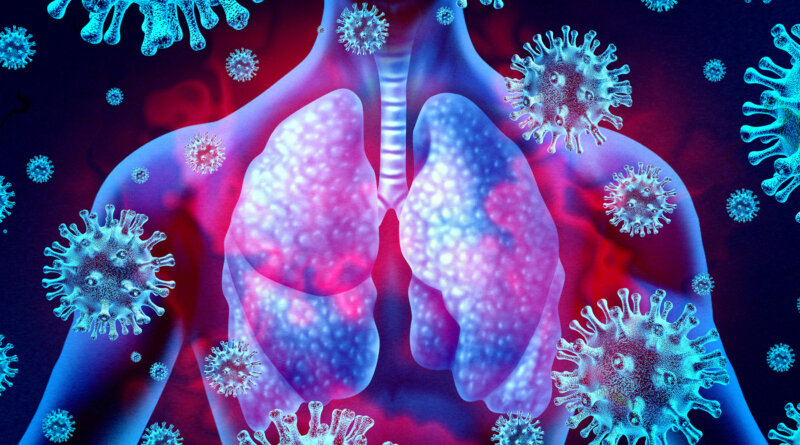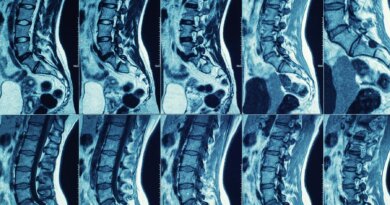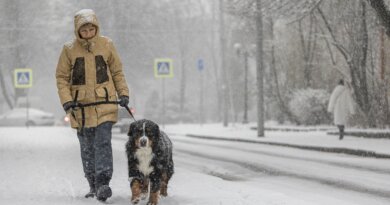COVID ‘Super Spreaders’ Fill Room With Virus
By Dennis Thompson
HealthDay Reporter
MONDAY, July 27, 2020 (HealthDay News) — Face masks can help prevent the spread of COVID-19 among folks trapped in a room with an infected “super spreader,” a new Swiss study claims.
Most infected people with a typical COVID viral load don’t flood the air with coronavirus-infected respiratory droplets, and the risk of catching the virus from them tends to be low, estimates show.
But a severely infected person who’s coughing frequently can fill a poorly ventilated room with as many as 7.4 million copies of the coronavirus for every cubic meter of air, according to researchers Michael Riediker and Dai-Hua Tsai, from the Swiss Centre for Occupational and Environmental Health in Winterthur.
“The implications of these findings for everyday life and the workplace are that individuals may be at risk of infection if they spend more than a few minutes in a small room with a person who is infected with COVID-19 and has a high viral load,” Riediker and Tsai concluded.
The study also “highlights the importance of wearing a mask,” said Dr. Aaron Glatt, chair of medicine and chief of infectious diseases at Mount Sinai South Nassau. “Wearing a mask clearly helps, and it will diminish the capacity of these super spreaders to spread as much.”
For this study, the Swiss researchers gathered data from a handful of prior studies that tracked how much coronavirus the average infected person will emit by breathing normally, as well as the virus released by a very sick person who’s coughing frequently.
The team then used a mathematical model to estimate how much virus either a low- or high-emitting patient is likely to release into the air of a closed room.
A COVID-19 patient with a high viral load could be expected to release a large amount of virus into the air, especially when they are coughing, researchers found.
These so-called super spreaders aren’t very common, but if they are engaged in activities like loud speaking or singing, their viral emissions can increase by 1 to 2 orders of magnitude, the researchers said.
Continued
As far as the risk to folks sharing the room with COVID-19 patients, people who are at rest tend to breathe in about a half a cubic meter of air every hour, researchers said.
“Thus, a person spending time in a room with an individual emitting at a typical rate and breathing normally has the chance of inhaling only a few copies of the virus when keeping distance from that person,” the study said.
However, people who are exercising might breathe up to six times as much air as a person at rest, gulping down several cubic meters of air per hour, researchers said. These folks clearly are at higher risk, particularly if they’re in a small room with a person who’s coughing.
The study was published July 27 in the journal JAMA Network Open.
“This mathematical modeling study shows that when individuals are engaged in activities that result in heavy breathing, such as singing or exercising, there is a higher chance of transmission as more particles are emanating from their body,” said Dr. Amesh Adalja, a senior scholar with the Johns Hopkins Center for Health Security in Baltimore. “This study is consistent for what has been seen epidemiologically with outbreaks in choir practice, for example.
“The implication is that when engaged in these types of activities it is really important to ensure that no one sick is participating and that social distancing is practiced with higher degrees of rigor,” Adalja said.
There are drawbacks with the new study. Because it’s a mathematical model, its findings can’t be directly applied to the real world, Glatt noted.
The study also doesn’t give all the information needed to prevent the spread of COVID-19 because it can’t estimate the actual infection risk posed by the amount of virus in the air, noted Dr. Michael Klompas, an infectious disease doctor and associate hospital epidemiologist with Brigham and Women’s Hospital in Boston.
“We don’t care if this virus is in the air or not. We care if you’ll get infected or not,” Klompas said. “This is a good building block and a helpful context study, but it doesn’t give us the answer to what we want to know.”
Continued
That said, mask wearing would prevent super spreaders from filling the air with virus, Glatt concluded.
“It boggles the mind why people are so resistant to wearing a mask,” Glatt said. “They have to understand they’re not wearing the mask for themselves. They’re wearing the mask for people that are unfortunately not capable of protecting themselves. They’re wearing the mask for everybody else in the world, not for themselves.”




